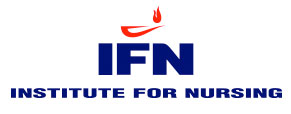AI Cuts Nurse Turnover in Half
 Guthrie Clinic is a not-for-profit health system designed to offer patients in rural New York and Pennsylvania a full spectrum of health services incorporating primary care, behavioral health services, surgical services, inpatient care and more. And it has implemented artificial intelligence designed to reduce nurse turnover and overtime, improve care quality, cut costs, and improve access to care.
Guthrie Clinic is a not-for-profit health system designed to offer patients in rural New York and Pennsylvania a full spectrum of health services incorporating primary care, behavioral health services, surgical services, inpatient care and more. And it has implemented artificial intelligence designed to reduce nurse turnover and overtime, improve care quality, cut costs, and improve access to care.
THE PROBLEM
Guthrie Clinic serves a primarily rural community that covers 9,000 square miles in parts of New York and Pennsylvania. Providing the same level of access to care across such a wide region can be difficult, and that challenge was even greater during the COVID-19 pandemic. During that time, the health system experienced the loss of a lot of its workforce, and it is located in an area where it already is difficult to recruit employees.
“As a result, we decided to look at new care models that would allow us to layer on technology to expand access to care no matter where the employees or the patients are located,” said Terri Couts, RN, senior vice president and chief digital officer at Guthrie Clinic. “The idea behind this initiative was that, regardless of where the patient was, we had the ability to deliver the right level of care at the right time wherever the patient needed it.
“That way, patients wouldn’t have to travel hours to get care or get transferred to facilities out of their communities that would require their families to travel to visit them,” she continued. “The bottom line was we needed to rethink our current models and innovate to maximize our resources by using technology and redesigning current processes.”
PROPOSAL
Guthrie Clinic entered the AI space a little hesitantly and wanted to prove out the return on investment. It went with Artisight, vendor of a platform that leverages ambient AI that sees, understands and augments clinical activities in real time by combining computer vision and sensor network technology.
“We started with telesitting,” Couts recalled. “During the pandemic, we had a hard time covering all our patients with sitters, a safety precaution for patients at high risk of falling. With traditional sitting, you put a person in a room with a patient to redirect the patient to stay in bed, but that takes a lot of resources and takes those extra hands off other bedside care.
“During this time, we were paying a premium for staff to sit with patients and, even then, we still didn’t have enough sitters to go around to all the patients,” she said. “The costs were soaring.”
Guthrie Clinic adopted the AI technology to change that 1-to-1 sit to a virtual sitting model to make the ratio 1-to-14, so now one sitter could safely monitor 14 patients.
“This project did not include just adding a camera and speaker to the room, but that hardware sat on top of the AI-driven platform,” she explained. “If a patient moves around the room, the AI technology in the camera alerts the telesitter there is activity in the room that requires intervention. The telesitter can interact directly with the patient or call an on-site nurse for assistance.
“Overall, the technology has allowed us to lift and shift those 1-to-1 sits and allow those employees to be back at the bedside providing direct patient care,” she continued. “We document everything and place orders in the EHR so we understand who’s taking care of the patients and the other elements related to patient care.”
MEETING THE CHALLENGE
The health system has grown the program into what it calls a “virtual command center.” It is a centralized command center that is not attached to any hospital and allows staff to check the pulse of the organization.
The center has virtual sitting, centralized transfer center, virtual telemetry monitoring, virtual nursing, and an EICU component. That was established in the last year and the organization is planning to grow the services in the future.
“It’s really going to be our virtual hub on how we care for patients and manage resources, whether it be beds, staffing or the ability to transfer patients,” Couts said. “The command center helps us coordinate everything to have virtual care models working alongside daily operations and collaboration in the same space. We’ve also integrated the technology with our hands-free communication devices.”
RESULTS
Guthrie Clinic has virtual ICU nurses supporting nursing care at the facilities. After the pandemic, it was at an average of three to five years of seniority in the ICUs, which is critical.
“The intuition that nurses have on how to take care of patients was lost because we had a large exodus of nurses,” she recalled. “With this technology, we’ve been able to reduce our turnover rate to about 13% from more than 25%. This reduction in turnover also provides cost savings in the form of signing bonuses we would pay out for new staff.
“We have been able to look at metrics surrounding how much time per shift nurses are spending in the EHR system,” she continued. “These administrative tasks add to the burden and burnout nurses feel. With this technology, we’ve been able to reduce time spent in the system from around 160 minutes to 126 minutes for a savings of more than 30 minutes per shift. That’s a big difference that’s important to our nurses.”
These types of results illustrate why nurse satisfaction is through the roof, she emphasized.
“Additionally, we’ve reduced nurse travelers by 82 for fiscal year 2023,” she reported. “That’s a hard cost savings of approximately $7 million. Our ICUs no longer have travelers. Travelers serve a specific purpose but are not a sustainable long-term model for two specific reasons: costs and engagement with the organization and patients they serve.
“We’re also measuring things like how many transfers we’ve accepted from outside organizations,” she noted. “We were losing about 50 transfers a month because we didn’t have the right support. Now, thanks to this technology, we are able to accept those patients, which also adds to our bottom line.”
The other thing the health system is measuring is quality outcomes, such metrics around sepsis and making sure the organization is staying within sepsis bundles to ensure it can receive the reimbursement it deserves for the work it performs.
“Our virtual nurses are like a director of an orchestra,” she explained. “They help ensure documentation is done in a timely manner and that fallouts in the bundle are minimized by ensuring the time-driven tasks are completed.
“This technology is really making a difference for our organization, and we’re getting third-party validation of its importance,” she continued. “We are proud to have won the ECRI 2023 Health Technology Excellence Award for the implementation of AI-driven telesitting.”
ADVICE FOR OTHERS
“AI is a huge buzzword right now, and there are many vendors that have AI-like products,” Couts said. “Before adopting anything, it’s important to identify the problems you are looking to solve and understand if the technology can help you address more than one use case.
“In a world where healthcare is financially challenged, as we embrace AI products, healthcare technology leaders need a vendor that partners with you to address all the challenges that we face,” she continued.
Today Guthrie Clinic is endeavoring to add on technology where its EHR has gaps, and one of those technologies is AI.
“So, we’ve layered on the AI suite, and it is a true platform that will allow us to scale in the use cases that we need,” she said. “In our case, we had such a large workforce exodus that virtual nursing and sitting were the most pressing needs.
“We were able to do that pretty seamlessly and then move onto other use cases, such as protecting staff from violence,” she concluded. “It’s very important to not only understand what your use case is today, but also where you want to go in the future so you don’t get stuck with a platform you can’t optimize. The system we’ve implemented is truly a comprehensive smart hospital platform.”
(This story originally appeared in Healthcare IT News.)




